Out in the Pantanal: The Hyacinth Macaw Project
Stuart Whittington - Product & Marketing
Head of Product Stuart Whittington visited the Hyacinth Macaw Project in Brazil’s Pantanal and tells us all about it.
I was met by a spirited crew: Field Team Leader César was full of character, forever smiling and always keen to tell a story from his 14 years' local experience; Everson – a.k.a. “Spiderman” – was the official tree climber; Lucas (charmingly keen to practice his few English words) kept notes; and Lyse, a trainee two days into the job. All but Lyse the apprentice sport a single blue feather in their straw hats… maybe this will be her graduation prize if she makes the grade?
Welcome to the Arara Azul Hyacinth Macaw Project!
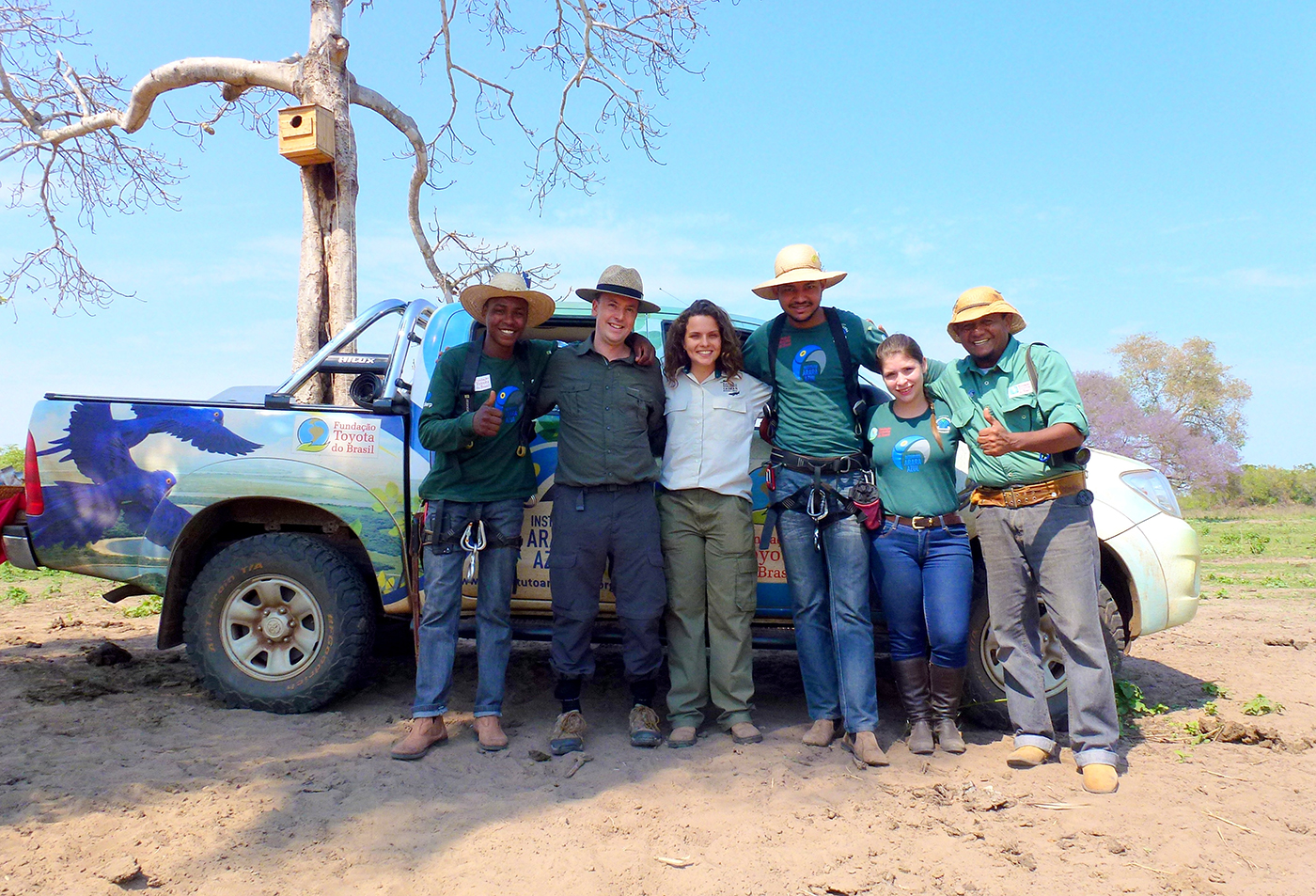
The 'Projecto Arara Azul' Hyacinth Macaw Project is based in Campo Grande, the capital of the sprawling state of Mato Grosso do Sul, with field stations dotted around throughout the region. Its aim is to protect the populations of these precious birds and one of its key areas for conservation is on the Refugio Caiman estate.
The half-day I spent discovering more about the project’s activities was kick-started after breakfast when my English-speaking guide from Refugio Caiman, Raisa, introduced me to the field team. We jumped into their brightly designed 4x4 and set off to check on a selection of the blue macaws’ local nests. The field team monitor the population of blue macaw that live on the property: there are 425 natural nests and 265 artificial nests spread across the area and, when working in the field, the team will check ten nests per day with the aim of reaching their target of 127 per month.
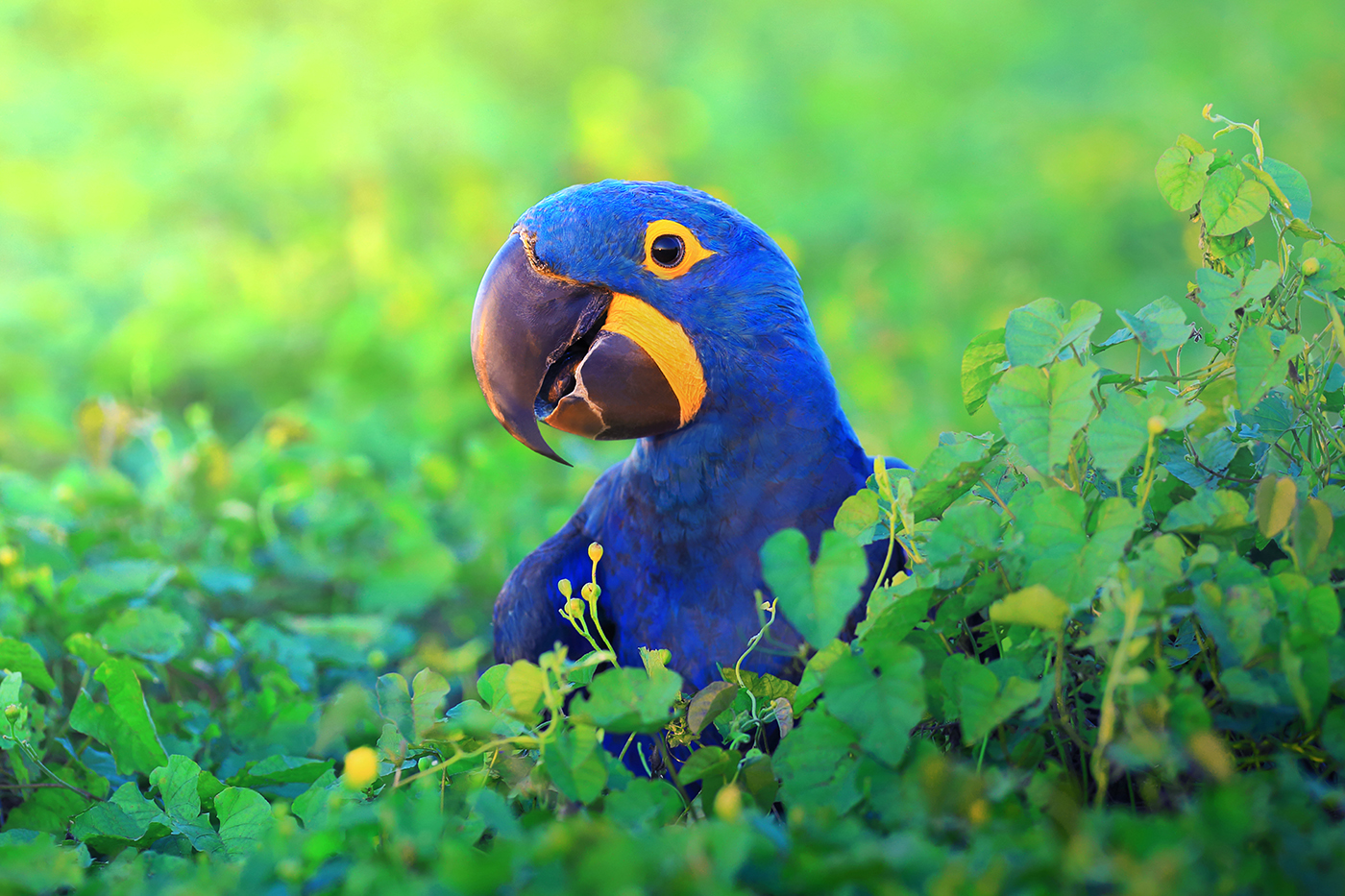
What do we know about the blue macaws?
As we traverse the bush, taking plenty of off-road routes through scrub
and lush vegetation, the team sings along to classic Brazilian hits on the radio, and César points out specific plants and tells me more
about the blue macaw: their main source of food is the acuri palm, which
is prevalent here and bears fruit all year round, as well as the
bocaiuva plant which fruits for six months of the year.
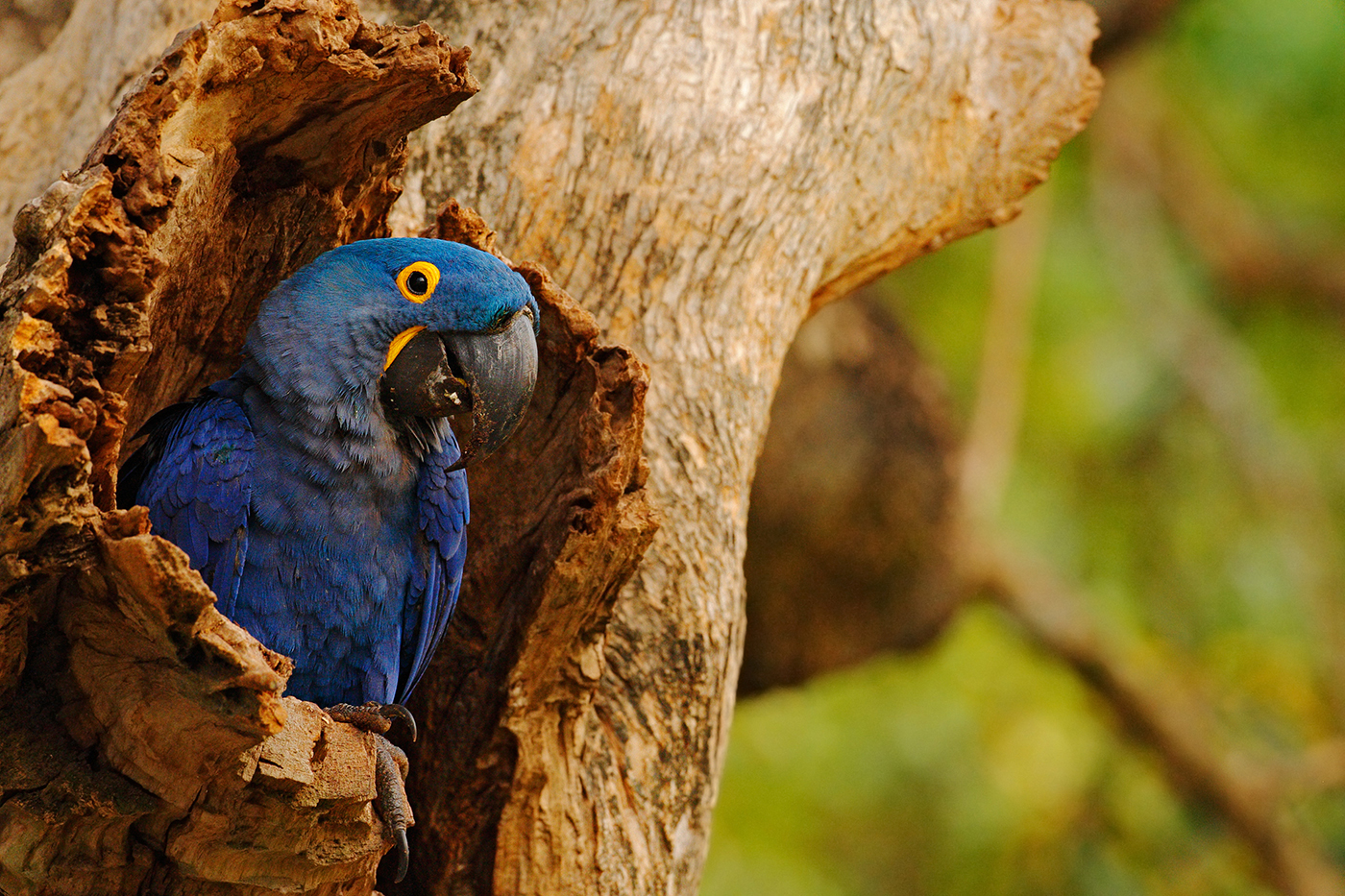
90% of blue macaw nests within the Refugio Caiman are in tall, endangered manduvi trees. Here the birds carve out a nest within the trunk, high up in the branches, which will be returned to year after year. Deforestation is limiting the opportunity for re-growth and so these trees are slowly disappearing – hence the provision of artificial nests by the team.
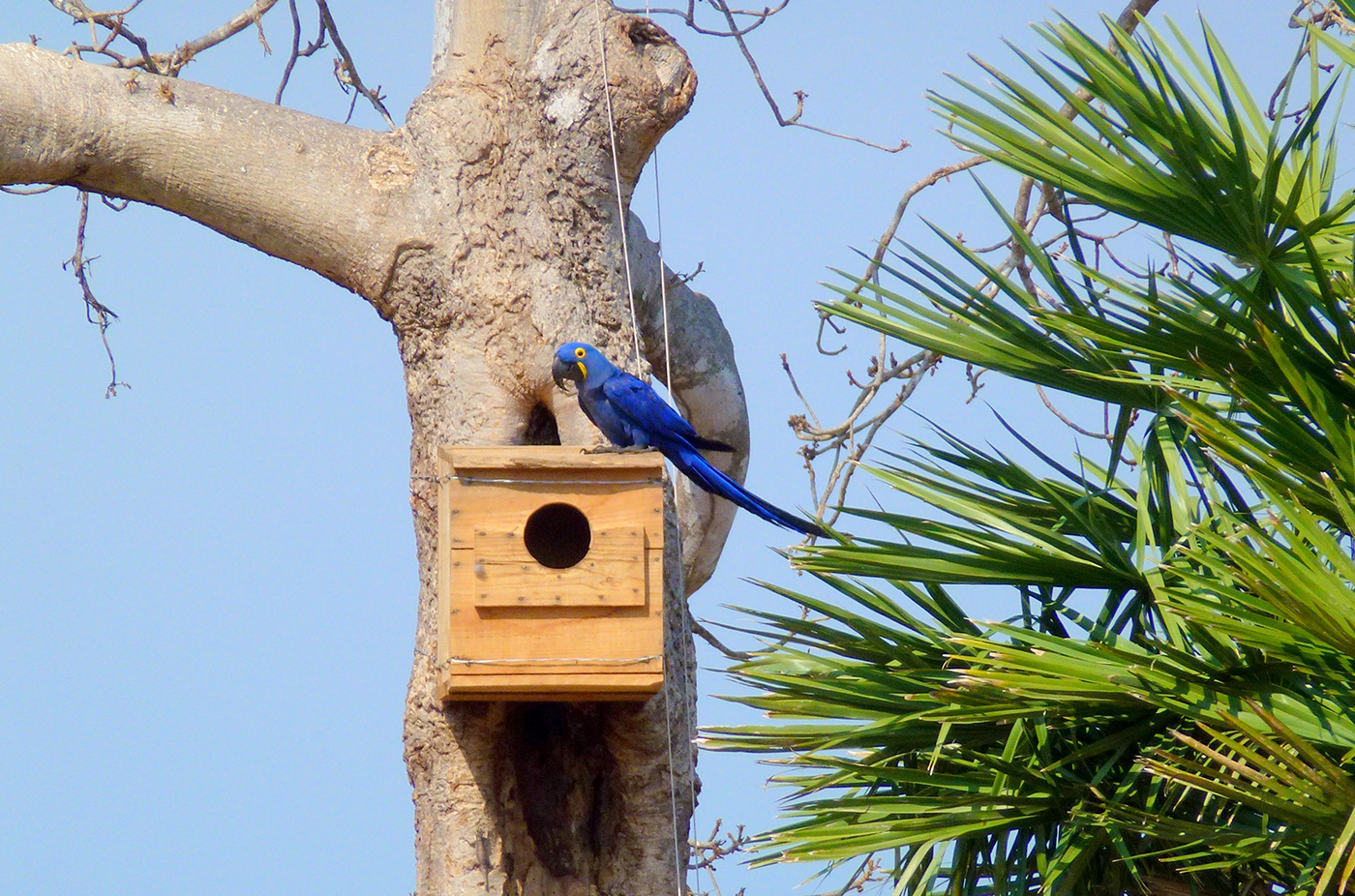
The birds breed from July to December and are pregnant for 28 days before laying their eggs in July. Once they have hatched they look like plucked chickens with over-sized beaks and stay in the nest until their first flight some 107 days later. They stay with their mothers for a year and a half (César proudly states that the books are wrong when they say two years… "What do those so-called experts know?") before they are chaperoned to a specific location to find a worthy mate.
What does the Hyacinth Macaw Project team do?
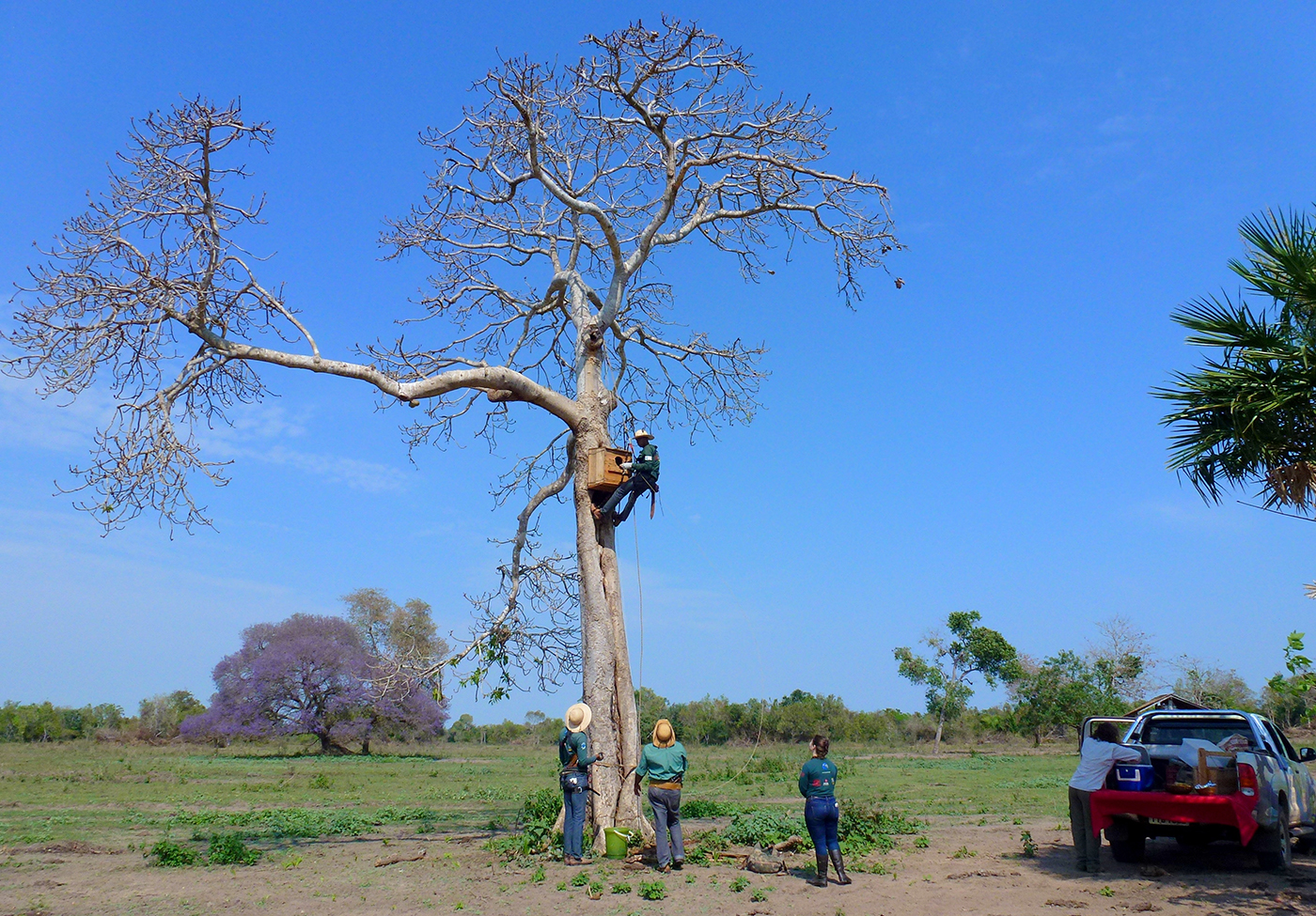
Much of the team’s work seems to be climbing trees to monitor the nests, hyacinth macaw population and their activity, noting the number and shape of eggs and weighing any young chicks. There are also efforts to include the local community in the work being done; César explains how the project is involved in education initiatives which focus on discouraging illegal trade in blue macaw. He extols the fact that local jobs are generated though their conservation efforts – not just directly within the project, but by the broader implications of tourism and people visiting the area to see the birds. Income is generated through sponsorship and charitable support; visitors can adopt a nest (a key source of funds) and guests of Refugio Caiman can spend time with the project.
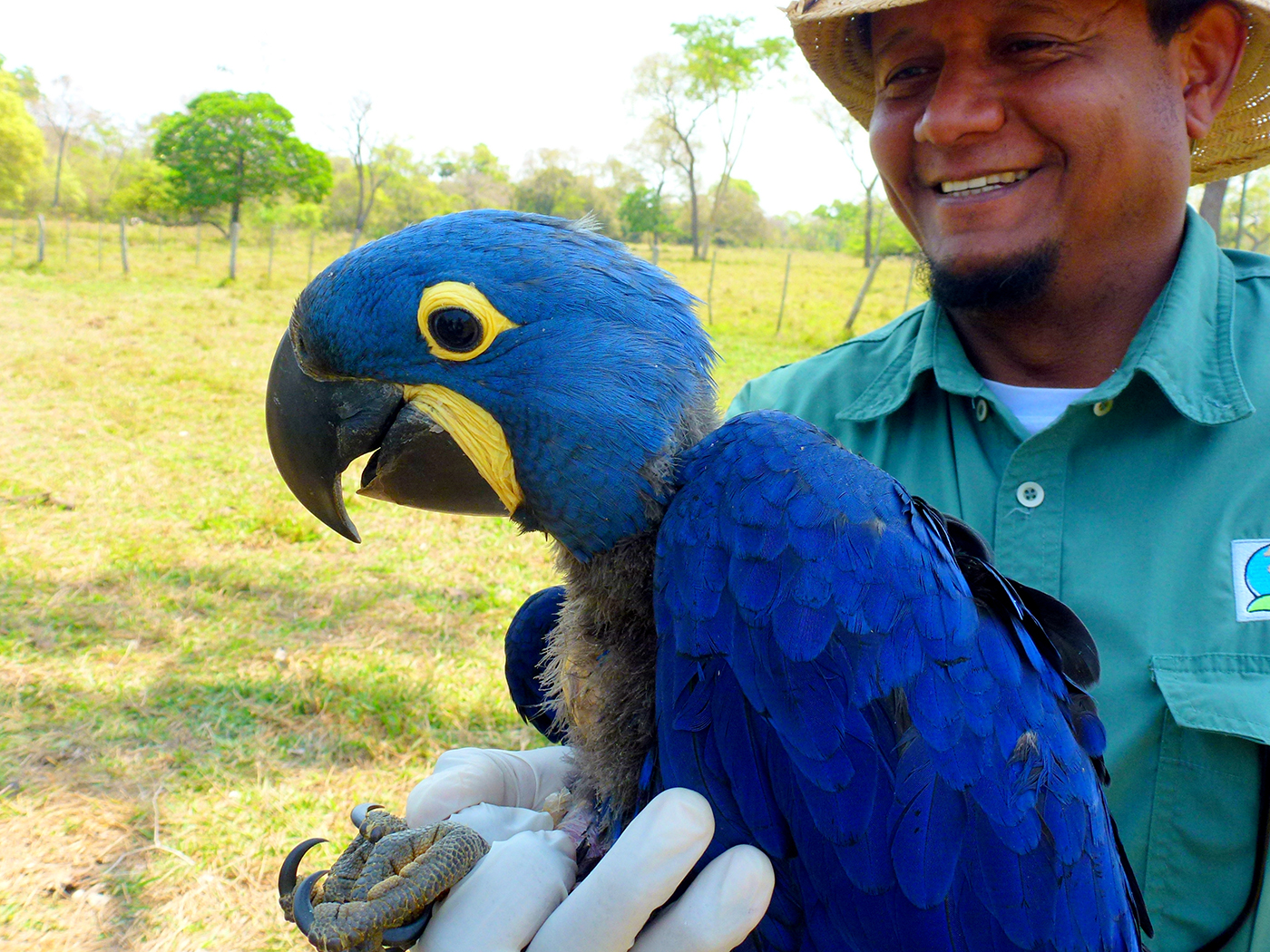
Has it worked?
In terms of measuring success, César tells me that the evidence is in the numbers: some 25 years ago, the population for blue macaw in the region was just 500; now it is believed to be closer to 7,000 and the bird has been taken off the world’s ‘endangered’ list and is now considered ‘vulnerable’.
Overall, the morning with the warm and friendly Brazilian team gave me a thoroughly enjoyable insight into their fieldwork out in the wilds – I got to venture deep into Refugio Caiman’s ranch and experience the landscape in a truly interactive way. I’d thoroughly recommend spending some time with the Hyacinth Macaw gang - and when you do, I wonder if Lyse will also be sporting a striking blue feather in her cap?
Read about the Refugio Caiman's other conservation project, the Onçafari Jaguar Project or browse our full range of wildlife holidays.
Tailor-made holidays
Flexible, custom-made holidays to Latin America created to match your exact requirements: our tailor-made itineraries are as unique as the clients for whom they are designed.
Design my trip


























